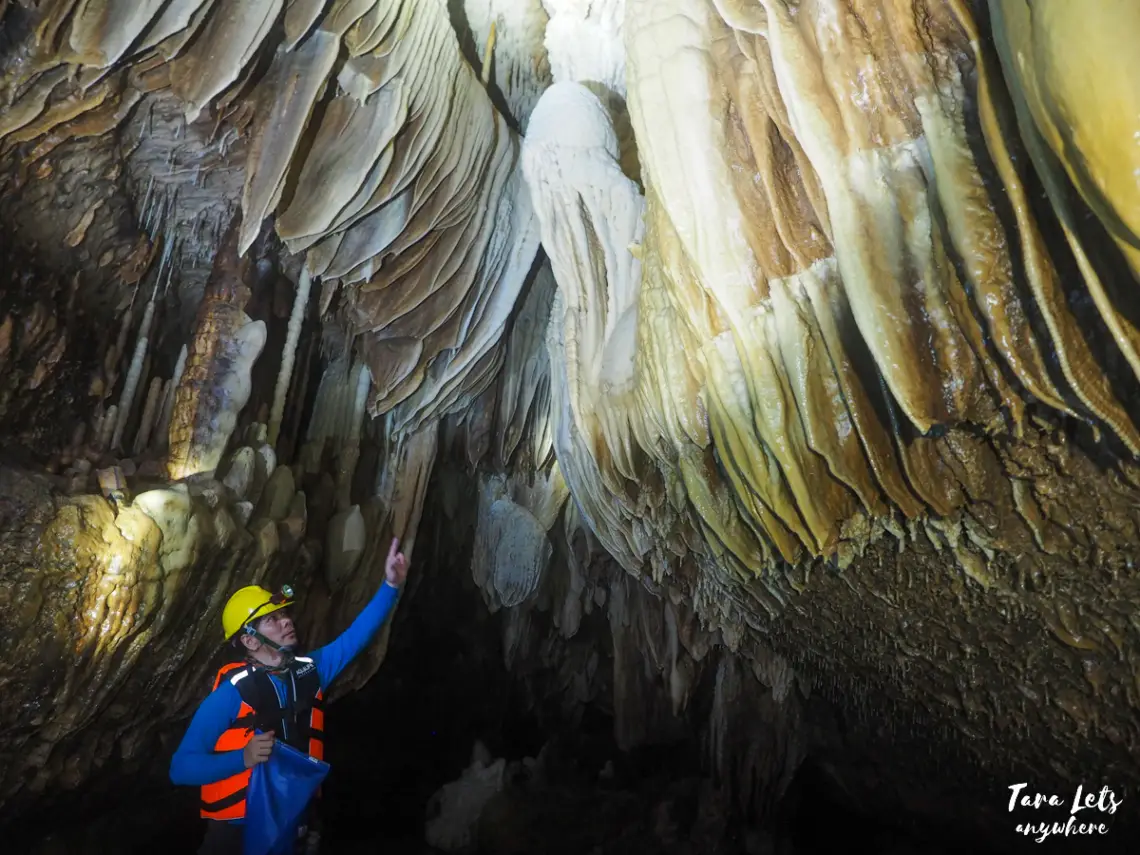
Guide to Capisaan Cave: Geologists’ Paradise in Nueva Vizcaya
I’m not an outdoorsy person, but one activity that I enjoy is spelunking. It’s fascinating to see the formations inside a cave, formed over thousands of years; the way layers sparkle; and the wildlife that lives in the darkness. One of the best spelunking sites in the Philippines is Capisaan Cave in Nueva Vizcaya.
Here’s our experience in exploring Capisaan Caves + a travel guide to help you get here too!
Contents
About Capisaan Cave
Capisaan Cave is considered the fifth longest cave system in the Philippines at about 4.2 kilometers in length. It has nine known entrances, with the three main entrances called Lion, Alayan, and Sabrina. The cave features large halls and chambers, a subterranean river, and different formations including stalagmites, stalactites, soda straws, and helictites.
It is also an integral habitat in the ecosystem. Different plant species thrive around the cave system, and the cave itself is home to bats and even “accidental” fishes and crabs that come from nearby tributaries.
There are 2 routes you can take in the cave: a short route that takes 2-3 hours and a long route that takes 5-6 hours depending on your pace. The short route starts at Sang-at Salug (which is the half-way point) and exits at either Lion or Alayan. The long route is the usual tourist option and starts from Lion all the way up to Alayan (or vice versa).
Our caving experience
I took this trip along with Hali and some of our friends at the beginning of 2022, just after the site had re-opened following the pandemic.
Before our activity, we attended an orientation at the Capisaan Cave Registration Area where we learned about the cave and the do’s and don’ts when inside.
According to our guide, the route between Lion and Sang-at Alug is mostly spacious caverns and subterranean streams, while that between Sang-at Alug and Alayan is home to the best formations in the cave. We wanted to see everything, so we chose the through-and-through route, from Lion to Alayan.
From the registration area, we took a short ride to the barangay where the Lion Cave entrance is and then walked for 15 minutes to the cave entrance. Since we were a large group, we were divided into 2 groups of four people with a tour guide each. We were equipped with lifevests, helmet, and a flashlight.
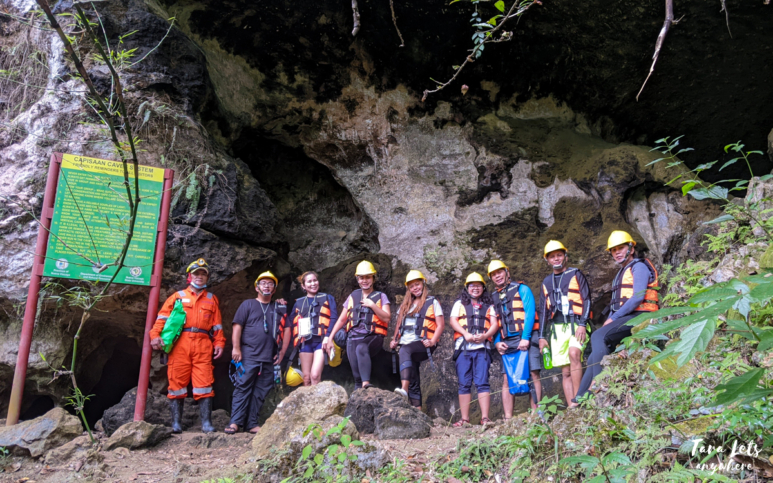
I was in the second group, and at first, the whole pacing seemed off. The first group went ahead of us and had ample time to take pictures, but when we’d arrive there to meet them, the main guide would tell us it was time to go. So we just let them have a few minutes of head start so we could move on our own pace and it was much better.
The route was mostly easy since most of it was just regular walking. We passed by spacious halls, ceilings filled with soda straws, and giant stalactites and stalagmites. There was an area filled with phallus-shaped formations too.
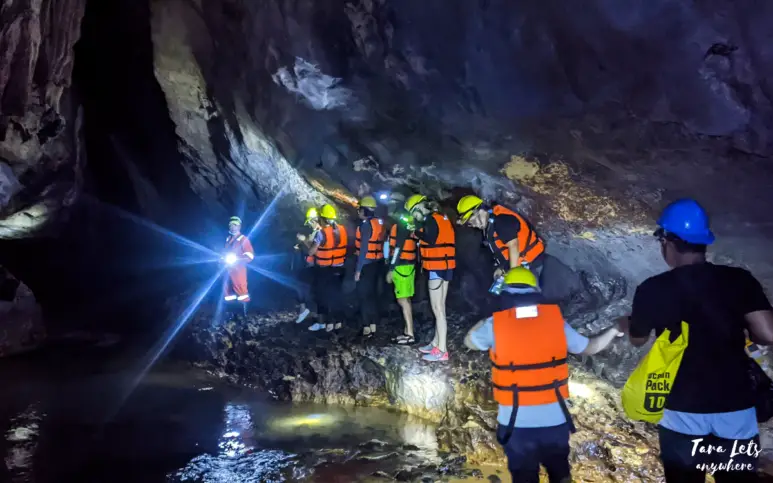
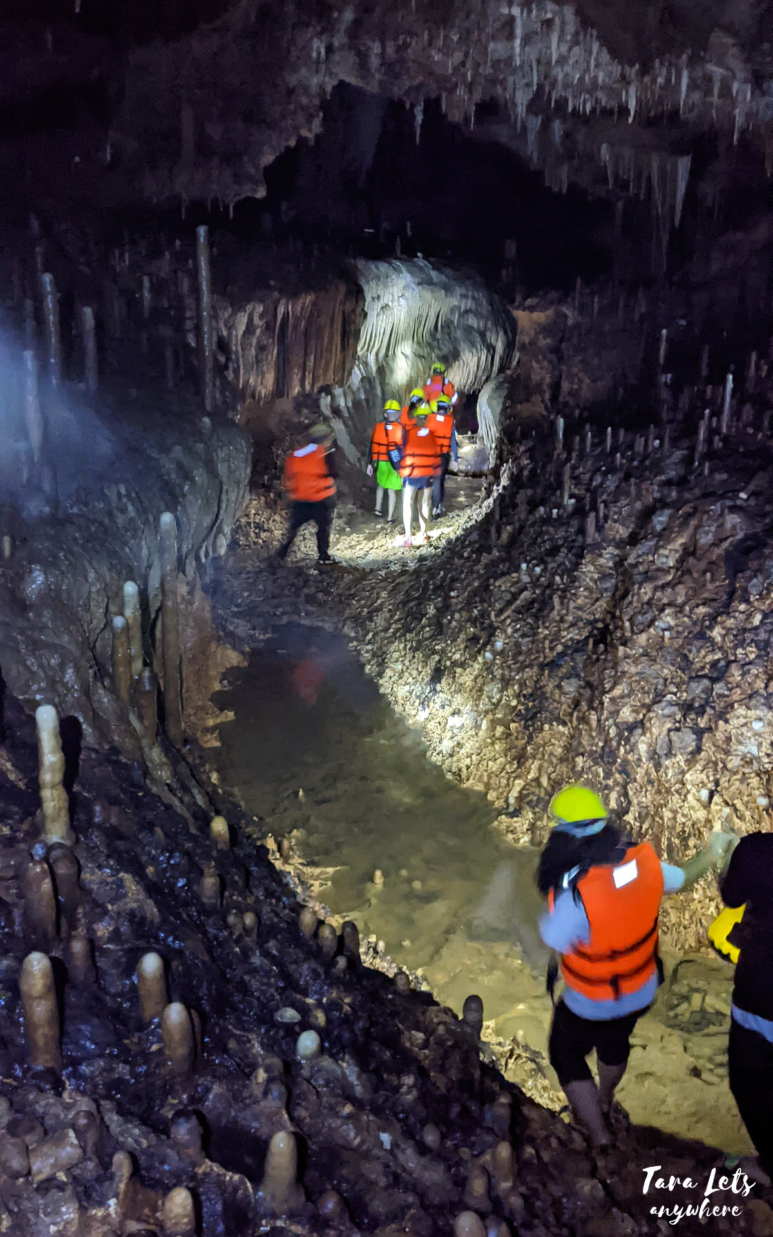
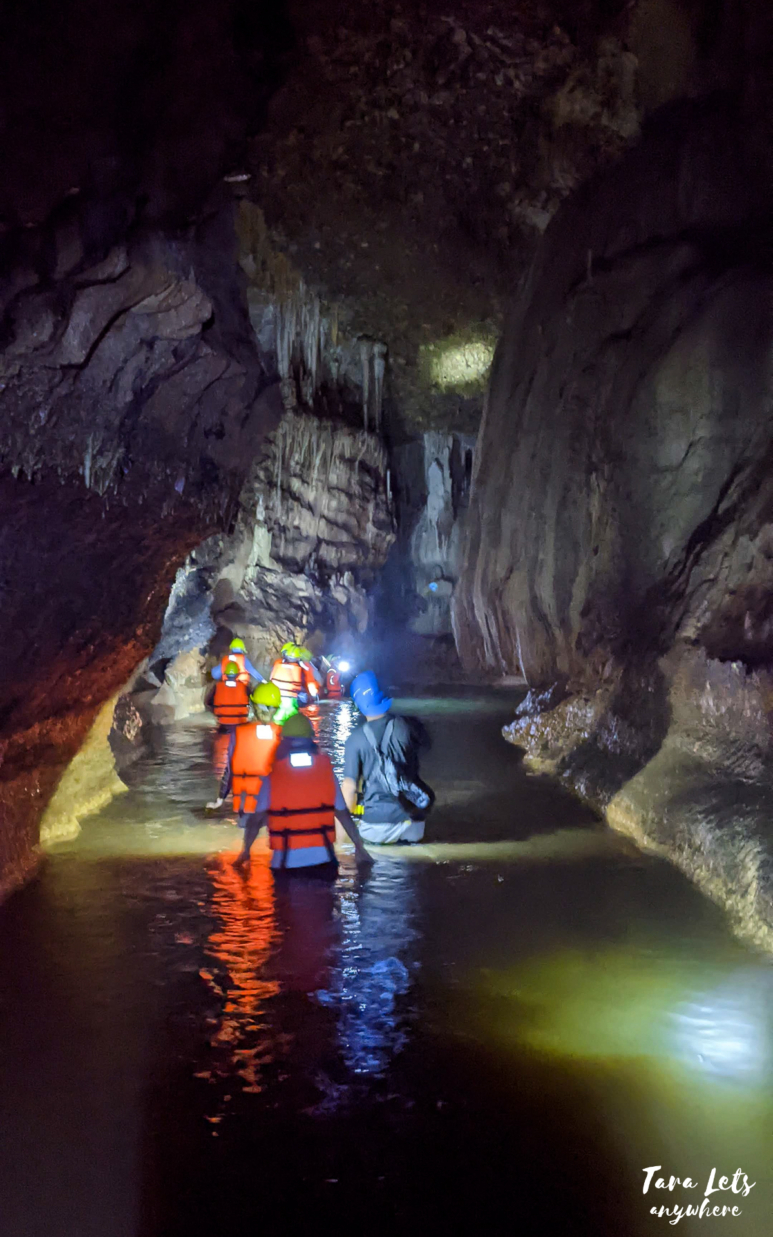
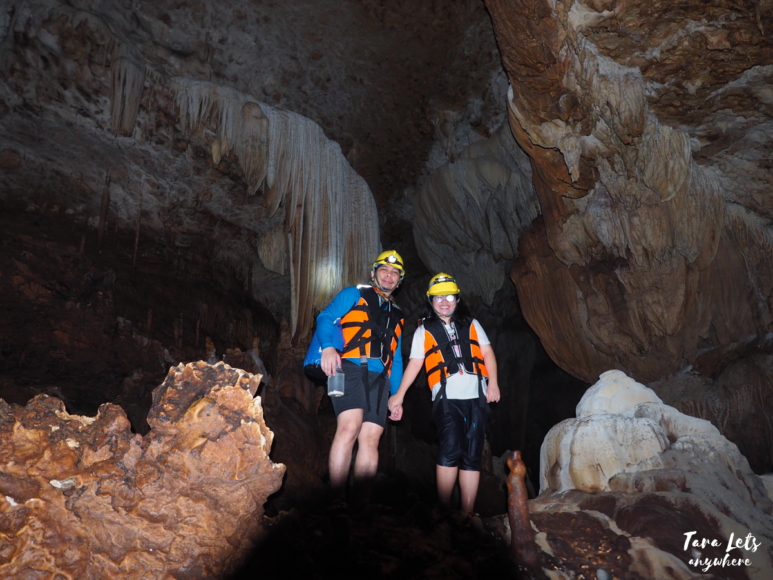
Here are other interesting spots we’d seen.
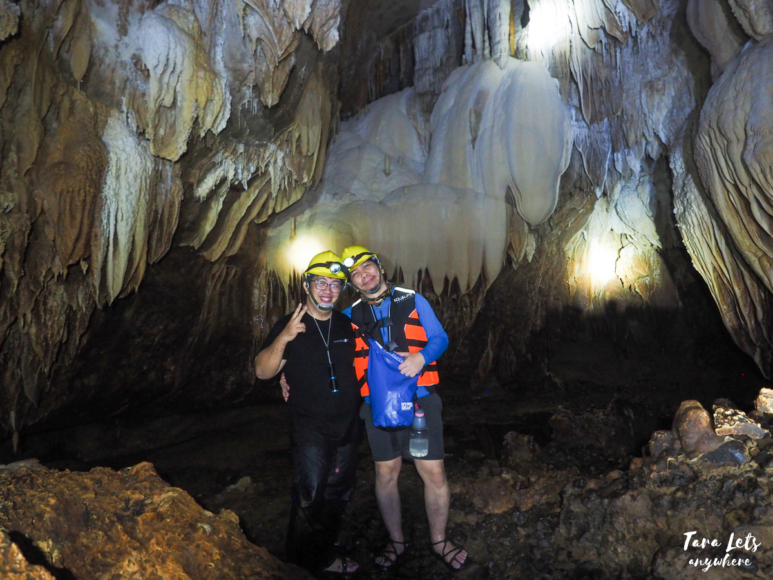
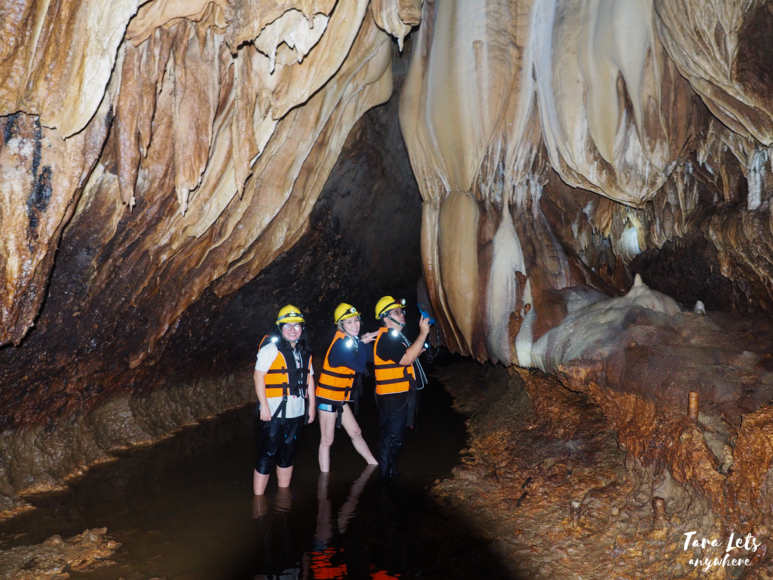
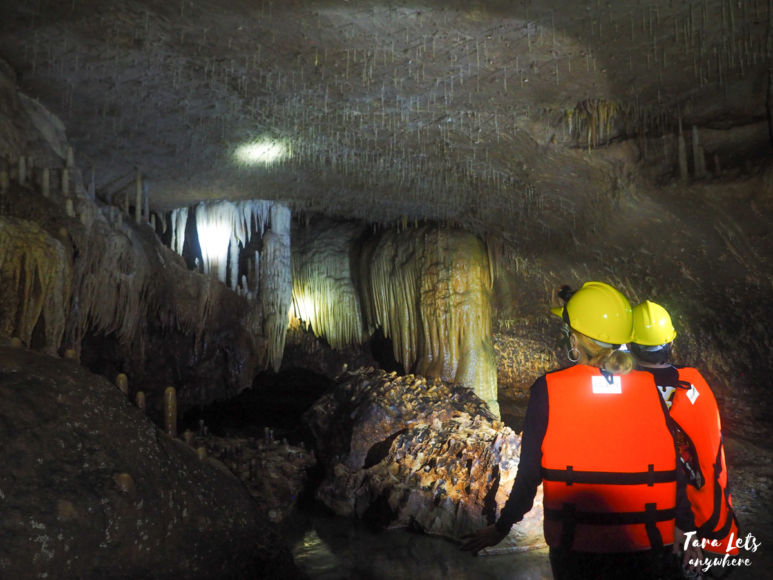
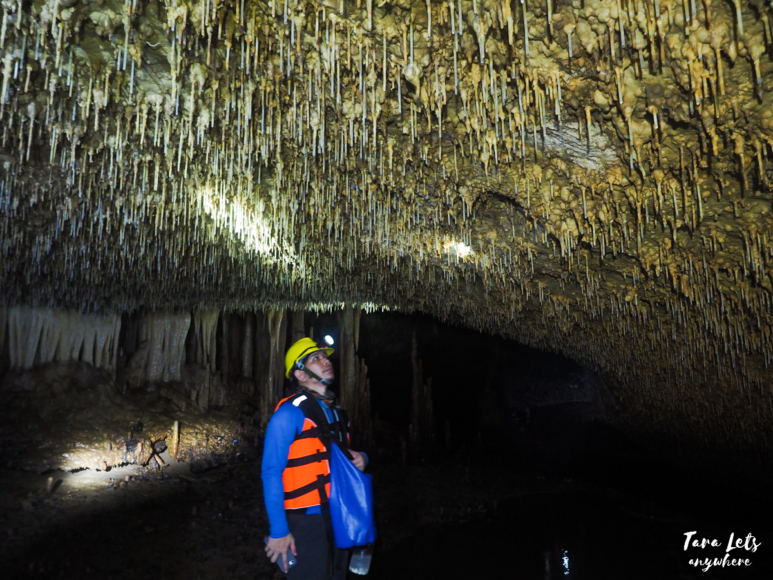
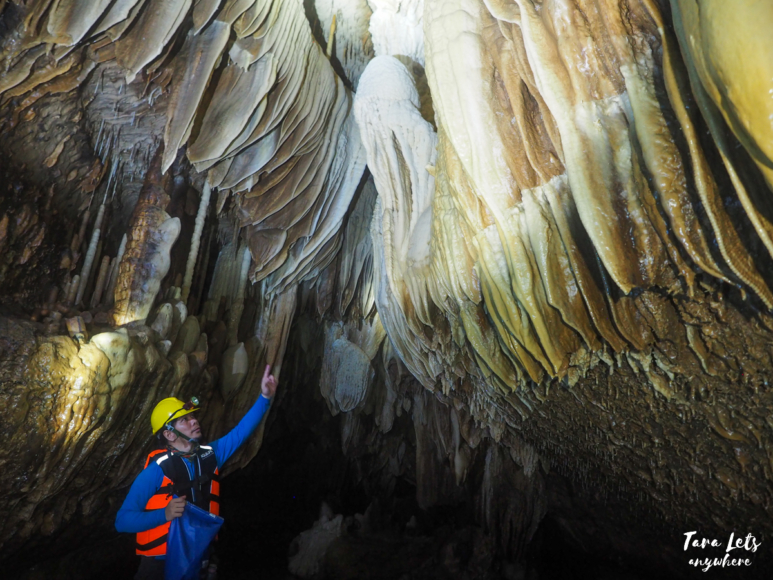
There were also challenging areas in the cave that made the experience unforgettable. One area was filled with deep water so we had to use a rope to “zipline” to the other side. Despite being submerged from ice-cold water, it was fun.
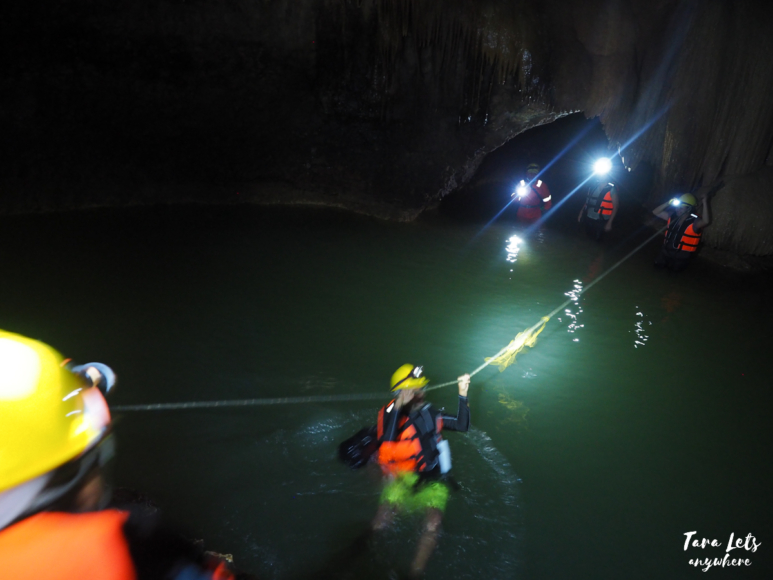
We also had to cross a flowing stream, so we had to either do a tightrope walk using a rope (really difficult, although our guide was there to assist us) or just swim the short distance. The latter for me was more doable.
At one point, we had to rappel up a steep incline.
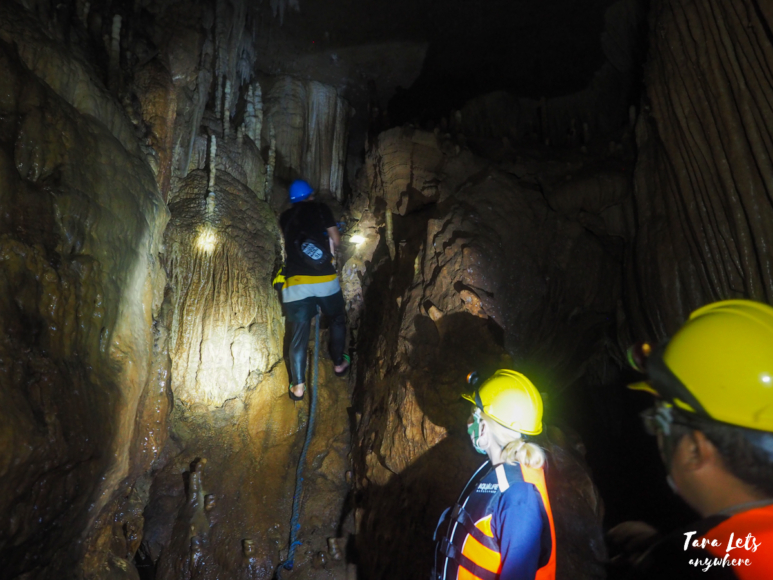
…And pass through at least two narrow openings. One slithers downward, so our guide had to go ahead to show us how to turn our body and where to place our feet. The other one goes across a cave wall and required us to crawl on fours. This was somewhat challenging because the rough surface scrapes the knee and our lifevests were stuffy.
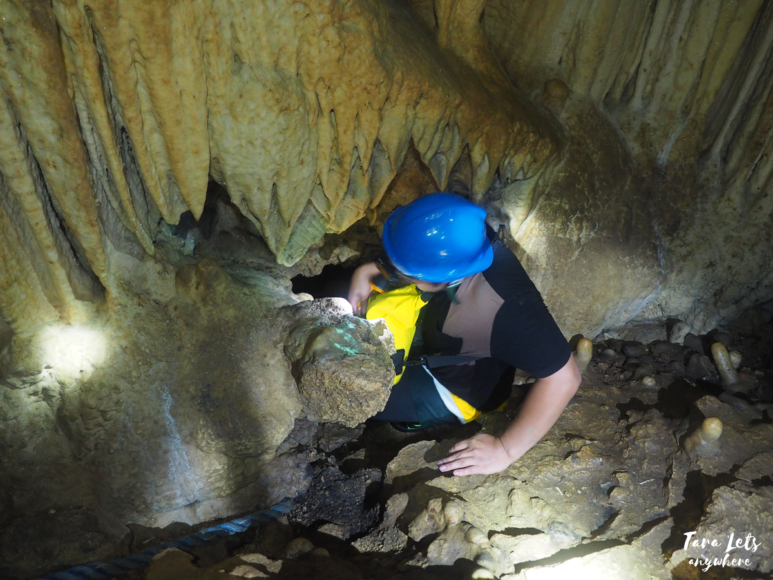
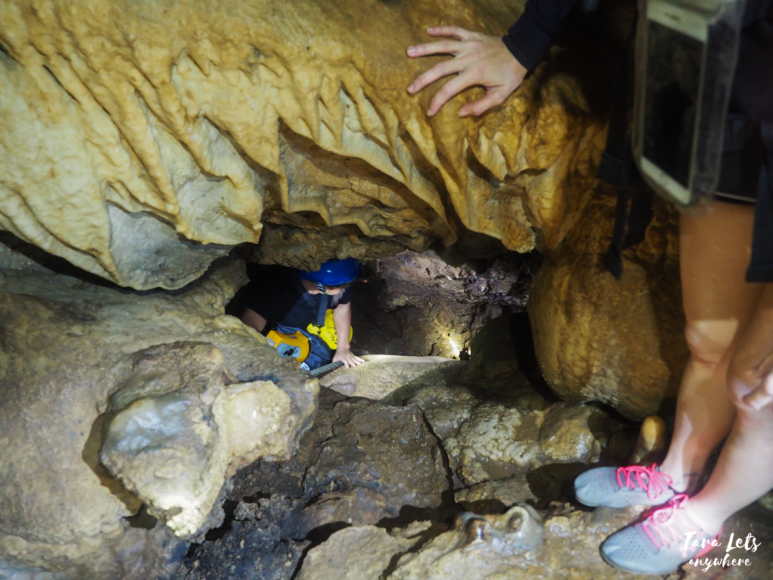
As we moved further inside the cave, we passed more halls with low ceilings.
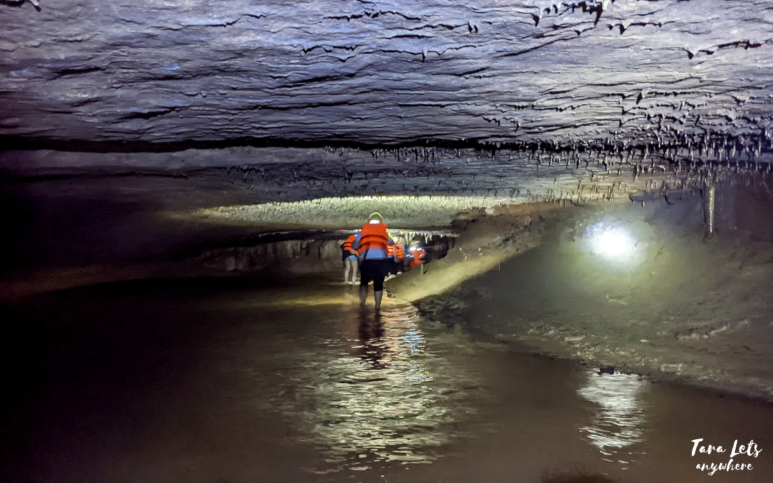
I enjoyed exploring most of the way, though an hour from the exit, I started to get a little restless. My lifevest was getting to me — it was bulky and it made it harder for us to navigate narrow or low spaces. I asked our guide about it and he said it was a new requirement for tourists. Honestly, I think it should be optional since the streams can be safely navigated without it and cave visitors have already done so in the past years.
When we made it out, it was already dark. We whooped and rejoiced and then went back to the registration area first to return our equipment. Then we went back to our homestay where a warm dinner was waiting for us.
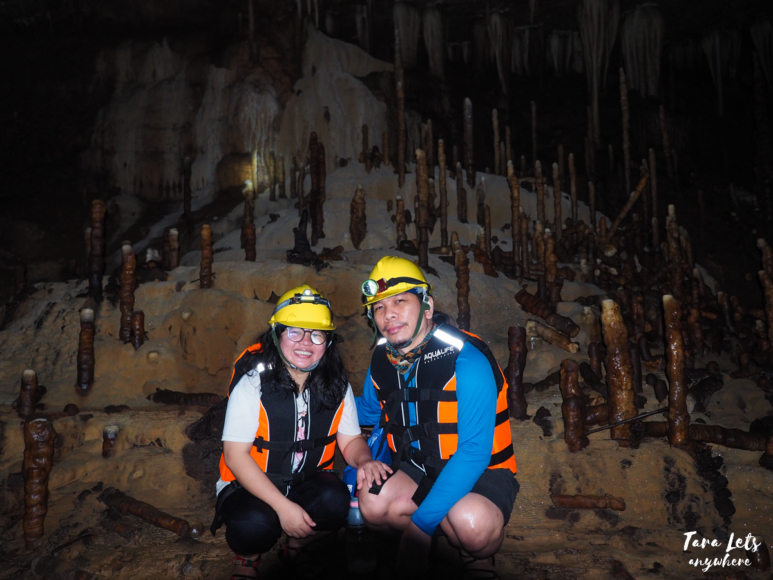
Overall, spelunking in Capisaan Cave was a really fun experience. I almost didn’t notice that we were there for a few hours; it felt like a 2-hour activity at most. I was afraid that it would be difficult since I had no warm-up, but it was doable and I want to say that I aced it. Haha. Anyone who’s a fun of caving should visit here at least once.
How to get here
Capisaan Cave is located in the highland municipality of Kasibu in Nueva Vizcaya. Here are the commute directions:
- From Manila, ride a bus bound to Cagayan Valley (Santiago, Cauayan, Roxas, Tuguegarao, or Aparri) and get off at Solano in Nueva Vizcaya.
- From there, ride a jeepney to Kasibu. Travel time is around 3 hours.
There is limited public transportation here, so I recommend bringing your own car.
Where to stay
There are accredited homestays you can book in the area.
We stayed at Pawid Homestay, which is just across the Capisaan Cave Registration area. The rooms here were humble but comfortable. They also arranged our meals, which were delicious!
Capisaan Cave Itinerary
You can visit Capisaan Cave on a weekend! Here’s a sample itinerary (c/o our organizer Peng Evangelista):
| Day 0 | 10PM Assembly at Greenfield 11PM ETD to Nueva Vizcaya |
| Day 1 | 5AM ETA Barangay Imugan 6AM Breakfast / Register to Imugan Falls 7AM Trek to Imugan Falls 7:30AM Swim at Imugan Falls 8:30AM Back to barangay / wash-up 9AM ETD Kasibu 11AM ETA Kasibu / Check-in / lunch 1PM Caving in Capisaan Cave 6PM End of caving 7PM Dinner |
| Day 2 | 7AM Breakfast / check out 8AM ETD Lintungan Falls 9AM ETA Lintungan Falls 11AM Lunch (stopover in a restaurant) 1PM ETD Bayombong Cathedral 1:30PM ETA Bayombong Cathedral 2PM ETA Manila 9PM End of tour |
You have a lot of options when it comes to side tours, especially waterfalls: Imugan Falls (the one we visited), Diffuncian Falls, Mapalyao Falls, and Alimadin Falls. I have also seen other itineraries combining Capisaan Cave with attractions in Quirino Province. So it really depends on where you want to go.
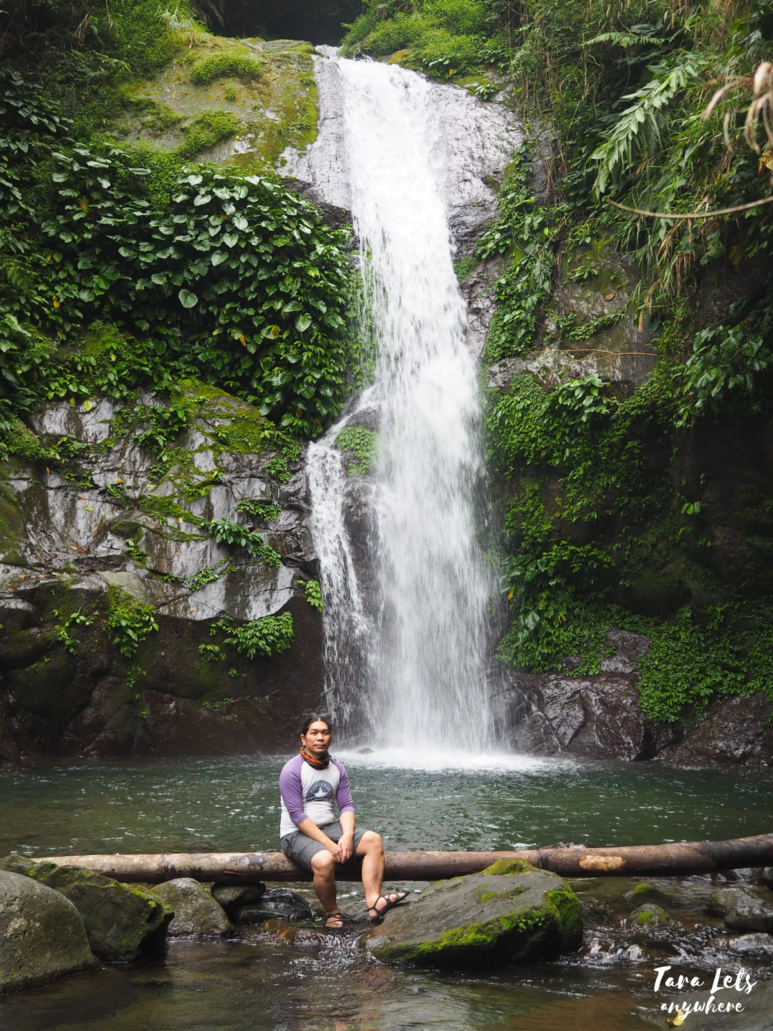
Capisaan Cave Rates
Here are the current rates (Updated as of 2022):
| Fees | Group package: P2000 for 4 people Inclusions: Guide fee – P300 per person Entrance fee – P100 per person Equipment rental – P100 per person |
| Others | Homestay – P250 per person |
We availed of the group package for 4 people. If you are fewer than four people, you still need to pay the full amount. Honestly, I think it’s a steal considering the amazing caving experience.
Also, don’t forget to tip your guides!
Travel Tips
Here are important tips before your visit to Capisaan Cave:
- What to wear: Wear lightweight clothing that will cover your arms and legs to prevent scratches. This can be legging or trekking pants, a quick-dry shirt or rashguard, and a pair of trekking sandals. For safety reasons, slippers are not allowed. You can also rent a pair of aqua shoes at the registration area.
- What to bring: It’s important to pack light. Use a drybag to keep your things to avoid them getting wet. Bring food, water, and a phone or camera with good lighting in the dark. You can also bring your own flashlight as a backup, although this can be rented along with other caving equipment at the registration area.
Other things you should know:
- Capisaan Cave is ideal even for beginners in caving. The guides here are trained and accredited by DOT so you can rest assured that you are in capable hands. Children 10 years old and below are not allowed.
- Kasibu is a highland town, so expect cool weather. If you’re staying overnight, bring a jacket or malong.
- Check the weather before your trip. Check with the registration office for updates and reschedule if there is continuous heavy rain in the area.
Contact
For reservations, you can contact Capisaan Caves and Tour Guides Association. For inquires about the province, message Nueva Vizcaya Tourism.
Has this travel guide to Capisaan Cave in Nueva Vizcaya been helpful to you? If you have questions or comments, let us know in the comment section below!
What to read next:
You might also be interested in these:

Katherine Cortes is a long-time backpacker and a freelance writer/editor. She likes beaches, snorkeling trips, and relaxing staycations (preferably with bath tubs!).



